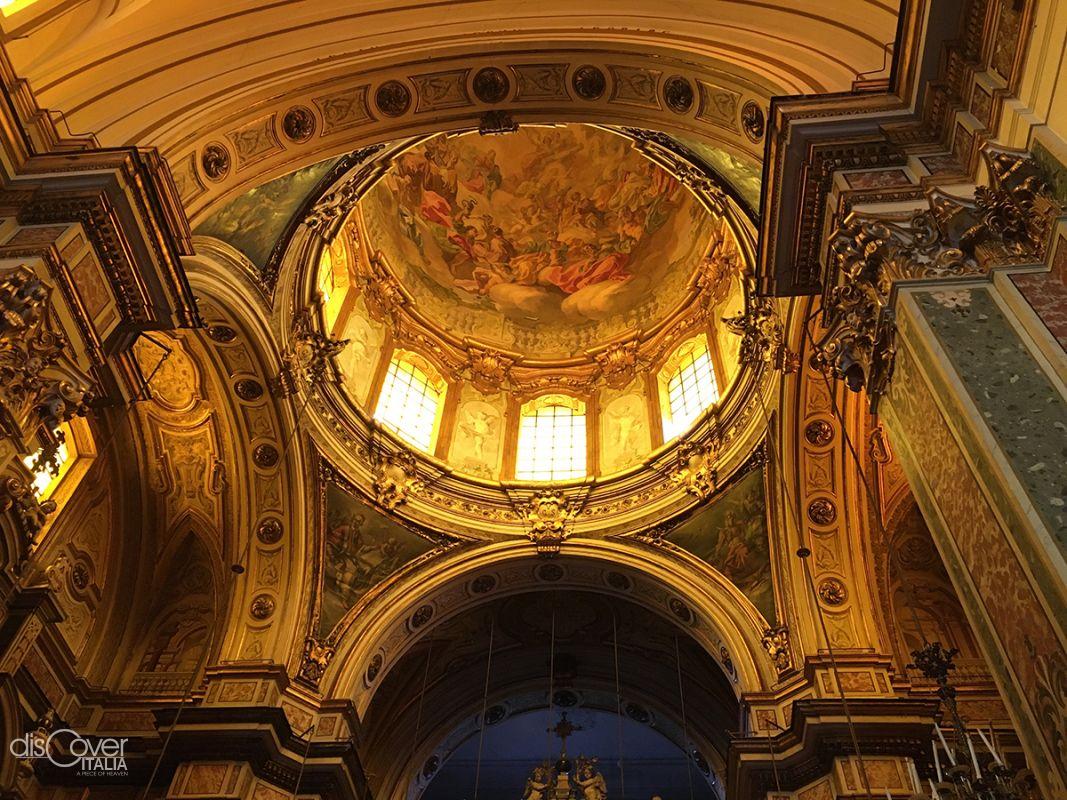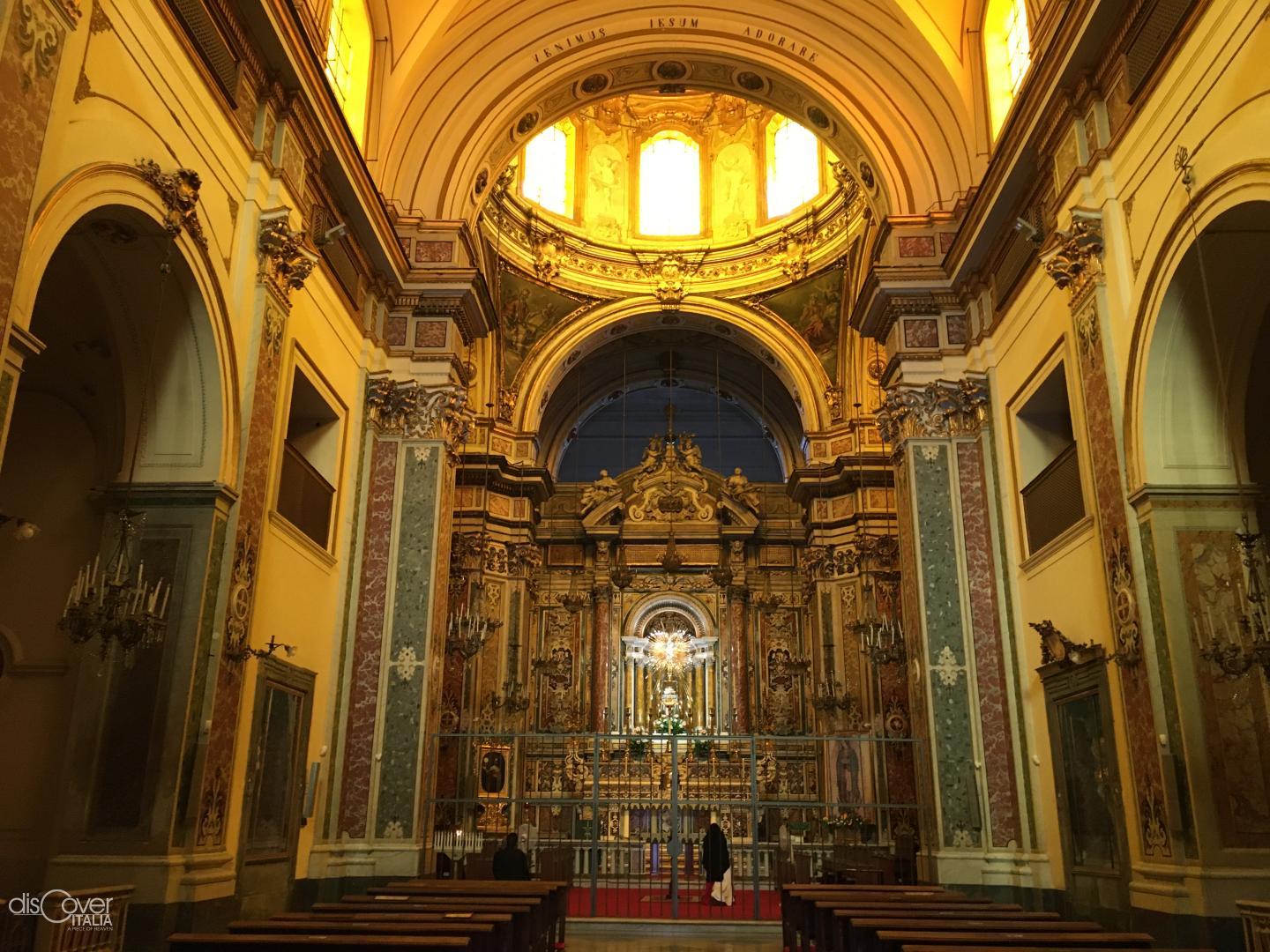The upper decumanus, together with the lower and greater one, characterizes the historic center of ancient Neapolis. Today the layout of this important road artery is not linear as it was in the past, because heavy renovations have been made in the last century which have altered its conformation, but above all the route.
The upper decumanus, to date, includes important roads such as via Sapienza, via Pisanelli, Anticaglia, via San Giuseppe dei Ruffi, via Donnaregina and via Santi Apostoli. An itinerary along this very unique road layout could start from an extremely important religious building for its evidence of the Baroque era: the church of San Giuseppe dei Ruffi, located in the Duomo area.
The church of San Giuseppe dei Ruffi
The building, together with the corresponding monastery, dates back to 1604 and its construction was strongly desired by some very devoted Neapolitan noblewomen. However, in 1611 the nuns moved to the convent of Santa Maria degli Angeli, renaming it with the name of San Giuseppe. A few years later, it was decided to build a new church by tearing down the existing one. The project was entrusted to the architect Dionisio Nencioni di Bartolomeo around 1630. In the meantime the cloister was being built thanks to the acquisition of some adjacent buildings. The work on the church, however, continued slowly and so in the middle of the century it was decided to entrust the construction site to Dionisio Lazzari, a polyvalent artist of the Neapolitan Baroque. He took care of the construction of the first dome and, above all, of the central nave. In the 1680s, the main altar was also built based on a design by Lazzari himself. Upon the latter's death, the construction site of the church of San Giuseppe dei Ruffi passed into the hands of Arcangelo Guglielmelli who, assisted by his son Marcello, finished the central nave and then started work in the atrium in 1725. During the eighteenth century, following an earthquake, important reinforcement works were carried out. For the occasion, the architect Nicolò Tagliacozzi Canale was called, who took care of the internal decoration of the church with precious marbles. The church, to this day, is a formidable example of the talent of the Neapolitan marble masters and sculptors of the seventeenth and eighteenth centuries and the building, in its entirety, must be seen as a great Baroque party machine.
The exterior of the church has a façade preceded by a portico and a double flight of stairs, while in the upper part there is a tympanum which refers to the great Roman religious machines of the coeval period. The interior is in the shape of a Latin cross with side chapels and is rich in inlaid marbles that create a sublime Baroque decoration. What strikes the visitor who enters the church for the first time is certainly the golden light, the characteristic element that invades the entire building, making it extremely suggestive from a visual and spiritual point of view.
At the end of the apse it is possible to observe the high altar which was built by Matteo Bottiglieri based on a design by Dionisio Lazzari. On it you can admire a canvas by Luca Giordano depicting the Holy Trinity with the Saints. Very interesting, then, are the two altars in the transept area. On the right, we have the one designed by Arcangelo Guglielmelli and on the left the one created by Bartolomeo and Pietro Ghetti based on a project by Giovan Domenico Vinaccia with statues by the same authors and by Giuseppe Sanmartino. Above the altar in question is a canvas by Luca Giordano depicting Saints Peter and Paul, the same saints who are portrayed in the statues presented just now. The dome of the church was frescoed by Francesco De Mura, a famous eighteenth-century Neapolitan painter. The fresco, created around the middle of the century, represents the Triumph of St. Joseph in a riot of characters who are presented to the observer with a perspective breakthrough, a very accentuated effect if you look at the dome from the bottom up. The visitor who decides to go to this little jewel of Baroque Naples will not be disappointed because, as has been said, the golden effect that pervades the church is truly extraordinary.

The complex of San Giuseppe dei Ruffi also includes two cloisters, designed by Dionisio Lazzari in the mid-17th century and then completed by Arcangelo Guglielmelli.



Comments powered by CComment